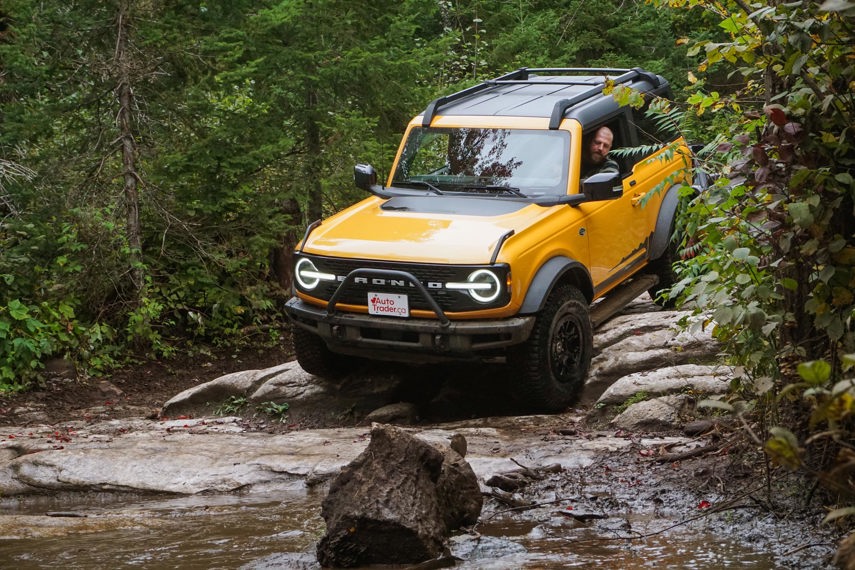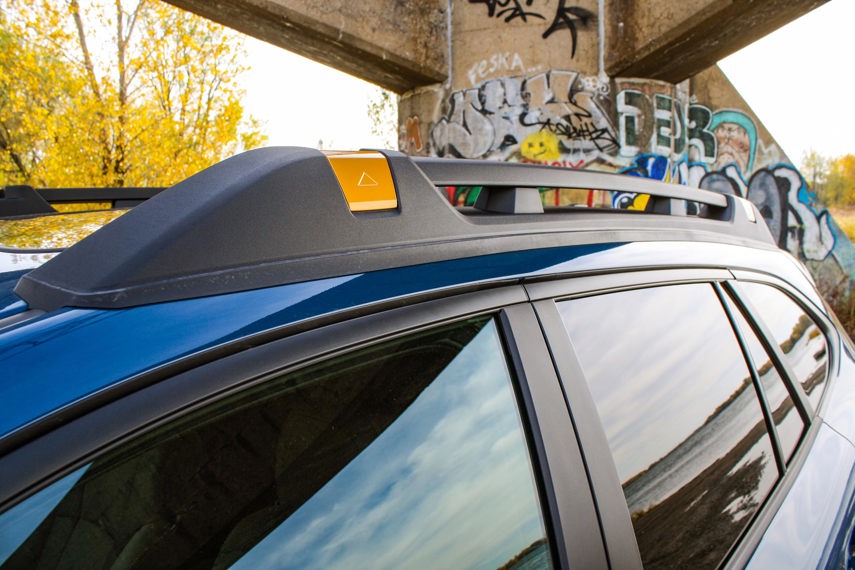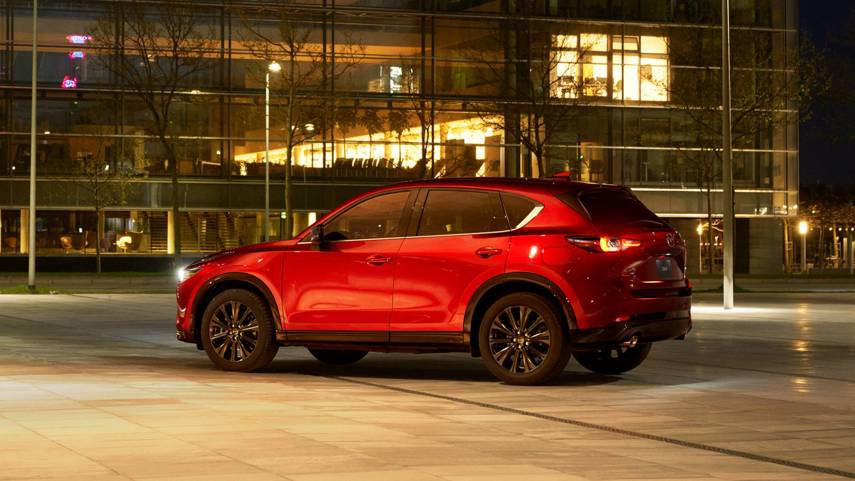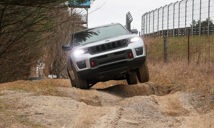Adventure is calling, and you’re ready to answer.
Maybe you’re looking for a vehicle to take you as far off the beaten path as possible, or one that’ll at least get you to the trailhead so you can hike, bike, or paddle the rest of the way. Either way, the market is brimming with options ranging from mild to wild, with plenty of pit stops along the way.
No matter which is right for you, there are some crucial features to consider that might make finding adventure easier, or they might just make enjoying it just a little less stressful. These are the ones that transcend the vehicle itself – whether it’s a hardcore off-road rig, or a humble family hauler. We’re talking about features that fit the bill no matter what you’ve got planned.
The following is a list of our favourites to look for in your next adventure vehicle.
1. Double the Driven Wheels
![]()
OK, this might seem like a no-brainer, but if only one of these features makes the cut, make it four- or all-wheel drive. There are differences between the two, and we’ll get to those shortly, but the important part is the same no matter what: more driven wheels means more traction, which means less chances of getting stuck.
From compact cars to full-size cargo vans, four-wheel traction is everywhere these days, though that doesn’t mean the peppy little Mazda3 is ready to tackle trails. Realistically, you’re going to want some sort of crossover, sport utility, or pickup truck, of which there are plenty to pick from.
We’ve already assembled a list of the five most capable crossovers on the market, which isn’t a bad place to start, but if you’d rather a truck, there are plenty of those. There’s the quirky and compact Hyundai Santa Cruz, the slightly larger – and practically unkillable – Toyota Tacoma, and the half-ton GMC Sierra AT4, just to name a few. And, of course, there are lots of SUVs out there, too, like the Jeep Wrangler that’s even available as a plug-in hybrid.
So what about those system differences? We’ll skip the deep-dive – though we have a detailed piece, if you’re feeling so inclined – and sum it up like this: all-wheel drive (AWD) typically works in a fully automated way that can’t be manipulated by the driver, while four-wheel drive (4WD) is usually an engageable system with settings that control how many wheels are receiving torque.
So which is better? Well, it depends on what you want to do with your adventure vehicle. If you plan to get serious about crawling over rocks and whatever else might end up in your way, a 4WD system is probably the right choice, since there’s usually some form of low-range gearing for the most challenging obstacles. If it’s cottage roads and access trails you’re after, AWD is perfectly fine – and such a system can hold its own on rougher stuff, too, assuming it’s accompanied by good ground clearance and some skid plates underneath to protect vital components.
2. Slow Your Roll – Literally

Whether you’re tackling serious trails or sticking to gravel roads, there’s nothing wrong with a little electronic trickery to add some peace of mind to your adventure, too. From terrain management to hill descent control, even the most hardcore off-roaders come fitted with some form of software-based system these days aimed at improving off-pavement performance.
While both are fairly common features these days in trucks, crossovers, and SUVs fitted with four- and all-wheel drive, Jeep’s old-school approach to off-roading with the Wrangler, as well as the Gladiator pickup that’s based on it, means there are no terrain management settings to be had; however, opting for an automatic transmission also includes hill descent control – a handy tool even for those with trail experience.
Think of hill descent control as cruise control, but for the trail. It uses the anti-lock brakes and traction control system to modulate the vehicle’s speed when negotiating steep and uneven slopes. Usually engaged via a button marked with the silhouette of a vehicle on a rough or steep surface, often with a speedometer next to it, the system allows the vehicle to be set at a prescribed speed (usually about 30 km/h or slower), and manages braking and acceleration so you can focus on steering.
Terrain management systems, meanwhile, go by many names but they all do the same job: tailor the vehicle’s various drive-related systems to the conditions. That means the engine, transmission, AWD/4WD system, and electronic nannies like stability and traction control are all tweaked for optimal response to various surfaces – usually mud, sand, snow, and occasionally rocks, too.
3. Getting Tired
![]()
Sending torque to all four wheels is handy, as is having those electronic helpers. Of course, none of it matters without the right tires to get it all to the ground the right way.
You wouldn’t wear hiking boots to a wedding – well, not unless you’re a certain Seinfeld cast member. Likewise, you wouldn’t wear dress shoes to go camping. Without the right tires for your truck, crossover, or SUV, you’re essentially doing the automotive equivalent of exactly that.
While rugged vehicles ranging from the Jeep Wrangler Rubicon to the Ford Ranger Tremor come from the factory fitted with all-terrain tires, a good set of rubber should be at the top of your adventure vehicle’s list of upgrades if it doesn’t have one already. Mud-terrain tires are probably a little much for a daily-driven vehicle, so choose wisely, but there are plenty of all-terrain options that work both on- and off-road.
4. Somehow I Manage (Cargo)

Those are the basics that’ll get you where you want to go, but what about bringing your stuff, too? That’s where clever cargo management systems come into play. And while there’s plenty of aftermarket support out there, factory-fitted equipment provides a great place to start – and it’s usually covered by your vehicle’s warranty.
A good set of roof rails goes a long way, though they’re mostly useless without crossbars between them. That’s why we love the roof rails that come fitted to most Subaru Outback trims that have crossbars built right in. Swing them across when you need them; stash them when you don’t. Genius. (The same kind of combination rails are available optionally on the Toyota Tacoma – the only other vehicle we know of that offers them.)
Of course, not all roof rails are created equal, with some vehicles like the Outback Wilderness and Kia Sorento X-Line featuring more robust ones with additional support braces that increase static load. That’s how to safely equip your vehicle with a rooftop tent – among the latest crazes in overlanding and adventure camping.
What’s on the inside counts, too, and even some of the most gimmicky features out there improve function as well as form. Take the seatback webbing that’s standard in the Ford Bronco Sport Badlands and optional in the Wrangler Rubicon; not only does the military-inspired stuff look cool, but it provides a handy place to clip tools and packs so it doesn’t end up lost when you need it most.
More basically, a good cargo cover is key – and a great one is even better. This is where the Mercedes-Benz E 450 All Terrain, basically the brand’s take on the Outback, gets a special shoutout, with its cover featuring a separate deployable cargo net that hooks into the ceiling. That way all your stuff stays where it should rather than spilling over the seats when you’re bouncing around on the trail.
5. Body Cladding

Body cladding like thick wheel-arch mouldings is a common sight in today’s crossover-crazed market, adding an air of ruggedness – occasionally even where it doesn’t belong. It’s an old car designer’s trick, providing a cheap illusion of additional ground clearance while also looking a little tougher than the same vehicle without it. (Don’t believe us? Take a look at the ever-so-slightly refreshed 2022 Mazda CX-5, which can be had with contrast black or body-colour cladding, and tell us the former doesn’t look like it rides just a little taller.)
It’s not all just for show, though, and it can provide protection against superficial scratches on narrow trails and access roads, while more pronounced fender flares can keep mud at bay when it’s time to get dirty. Heck, it’s even handy for leaning a bike before loading it into a carrier without fear of scratching the paint.
So there you have it – our list of the five must-have features we look for in an adventure vehicle. If you’re still trying to decide which vehicle is right for whatever you’ve got planned, check out AutoTrader.ca’s 10 most adventure-ready vehicles on the market.

